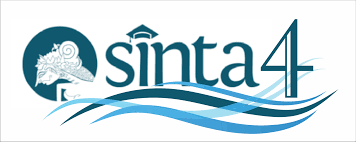SOCIAL MEDIA MARKETING IN THE PROMOTION OF INCUBATOR BUSINESS PROGRAMS
Abstract
One of the reasons the government will continue to implement public information disclosure is the public's lack of understanding and knowledge about government service programs. As one of the government agencies that provides public services, the Bandung Industrial Training Center uses social media platforms such as Instagram, Facebook, and WhatsApp as marketing media to provide information and market the Business Incubator program. According to Gunelius, the concept of implementing Social Media Marketing is used to analyze the implementation of Social Media Marketing, namely Content Creation, Content Sharing, Connecting, and Community Building. The goal of this study is to identify and analyze how the Bandung Industrial Training Center uses Social Media Marketing to promote the Business Incubator program. The descriptive qualitative research method was used, as well as the constructivism paradigm. The Bandung Industrial Training Center, according to the findings, implemented four critical elements that contributed to the success of Social Media Marketing: Content Creation, Content Sharing, Connecting, and Community Building. However, the application in the three social media platforms remains unbalanced, and the use of features in each social media platform is inefficient. This article uses terms such as business incubator, public service, and social media marketing.

This work is licensed under a Creative Commons Attribution-NonCommercial-NoDerivatives 4.0 International License.
An author who publishes in the Jurnal Darma Agung agrees to the following terms:
- Author retains the copyright and grants the journal the right of first publication of the work simultaneously licensed under the Creative Commons Attribution-ShareAlike 4.0 License that allows others to share the work with an acknowledgement of the work's authorship and initial publication in this journal
- Author is able to enter into separate, additional contractual arrangements for the non-exclusive distribution of the journal's published version of the work (e.g., post it to an institutional repository or publish it in a book) with the acknowledgement of its initial publication in this journal.
- Author is permitted and encouraged to post his/her work online (e.g., in institutional repositories or on their website) prior to and during the submission process, as it can lead to productive exchanges, as well as earlier and greater citation of the published work (See The Effect of Open Access).













